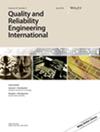将改进的金枪鱼群优化技术与图卷积神经网络相结合,计算发动机的剩余使用寿命
IF 2.8
3区 工程技术
Q3 ENGINEERING, INDUSTRIAL
引用次数: 0
摘要
准确预测发动机的剩余使用寿命(RUL)对于确保飞机的安全运行至关重要。然而,由于退化过程中错综复杂的潜在关系,基于深度学习的传统 RUL 预测方法在实际应用中受到可解释性和超参数调整的限制。为解决这些难题,本研究开发了一种改进的多策略金枪鱼群优化辅助图卷积神经网络(IMTSO-GCN)来实现 RUL 预测。具体来说,互信息用于描述测量参数之间的潜在关系,以便在为这些参数建立边缘时加以利用。此外,考虑到并非所有关系节点都会对 RUL 预测产生积极影响,而且 GCN 的固有超参数是高维的。受 "免费午餐(NFL)"的启发,IMTSO 被提出来降低超参数的优化成本,其中采用循环混沌映射来实现种群的初始化,以提高初始种群分布的均匀性。此外,还提出了一种新的自适应方法,以增强金枪鱼群优化(TSO)的探索和利用。利用 CMAPSS 数据集验证了 IMTSO-GCN 的有效性和先进性,实验结果表明 IMTSO-GCN 的 R2 大于 0.99,RMSE 小于 3,Score 误差在 1 以内。本文章由计算机程序翻译,如有差异,请以英文原文为准。
Combined improved tuna swarm optimization with graph convolutional neural network for remaining useful life of engine
Accurate prediction of the engine's remaining useful life (RUL) is essential to ensure the safe operation of the aircraft because. However, traditional deep‐learning based methods for RUL prediction has been limited by interpretability and adjustment for hyperparameters in practical applications due to the intricate potential relations during the degradation process. To address these dilemmas, an improved multi‐strategy tuna swarm optimization‐assisted graph convolutional neural network (IMTSO‐GCN) is developed to achieve RUL prediction in this work. Specifically, mutual information is used to describe potential relationships among measured parameters so that they could be utilized in building edges for these parameters. Besides, considering that not all relational nodes will positively affect the RUL prediction and the inherent hyperparameters of the GCN are high‐dimensional. Inspired by “No Free Lunch (NFL)”, IMTSO is proposed to reduce the optimization cost of hyperparameters, in which cycle chaotic mapping is employed to achieve initialization of the population for improving the uniformity of the initial population distribution. Besides, a novel adaptive approach is proposed to enhance the exploration and exploitation of tuna swarm optimization (TSO). The CMAPSS dataset was used to validate the effectiveness and advancedness of IMTSO‐GCN, and the experimental results show that the R2 of the IMTSO‐GCN is greater than 0.99, RMSE is less than 3, the Score error is within 1.
求助全文
通过发布文献求助,成功后即可免费获取论文全文。
去求助
来源期刊
CiteScore
4.90
自引率
21.70%
发文量
181
审稿时长
6 months
期刊介绍:
Quality and Reliability Engineering International is a journal devoted to practical engineering aspects of quality and reliability. A refereed technical journal published eight times per year, it covers the development and practical application of existing theoretical methods, research and industrial practices. Articles in the journal will be concerned with case studies, tutorial-type reviews and also with applications of new or well-known theory to the solution of actual quality and reliability problems in engineering.
Papers describing the use of mathematical and statistical tools to solve real life industrial problems are encouraged, provided that the emphasis is placed on practical applications and demonstrated case studies.
The scope of the journal is intended to include components, physics of failure, equipment and systems from the fields of electronic, electrical, mechanical and systems engineering. The areas of communications, aerospace, automotive, railways, shipboard equipment, control engineering and consumer products are all covered by the journal.
Quality and reliability of hardware as well as software are covered. Papers on software engineering and its impact on product quality and reliability are encouraged. The journal will also cover the management of quality and reliability in the engineering industry.
Special issues on a variety of key topics are published every year and contribute to the enhancement of Quality and Reliability Engineering International as a major reference in its field.

 求助内容:
求助内容: 应助结果提醒方式:
应助结果提醒方式:


